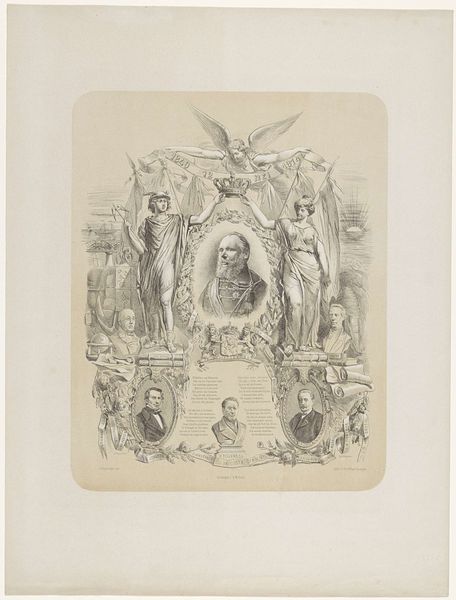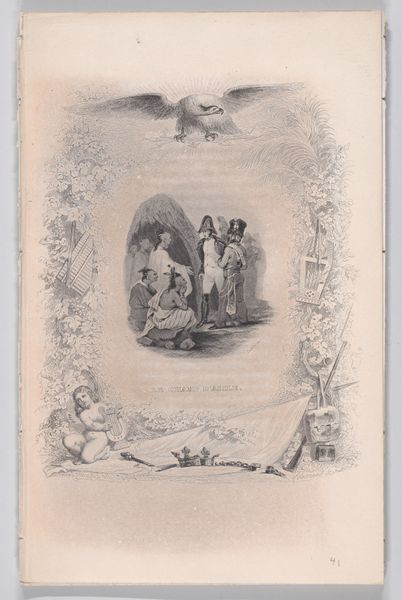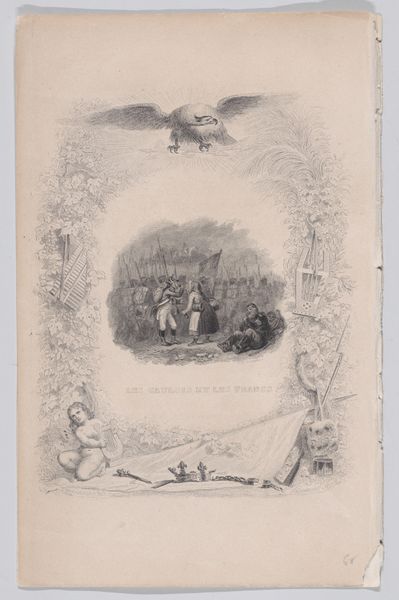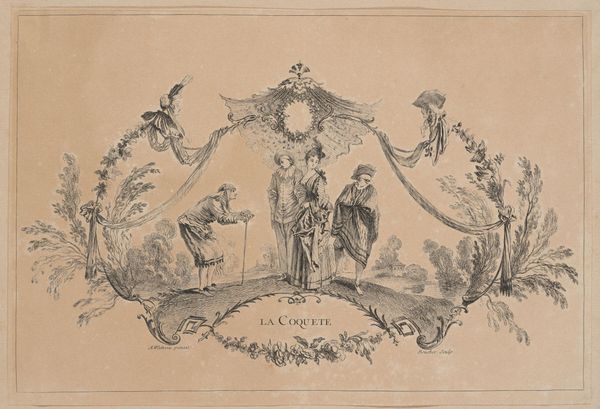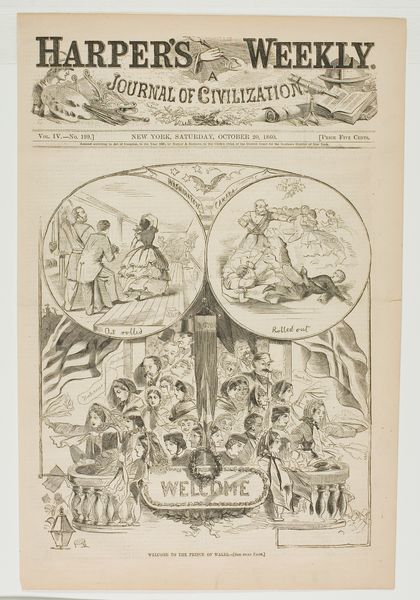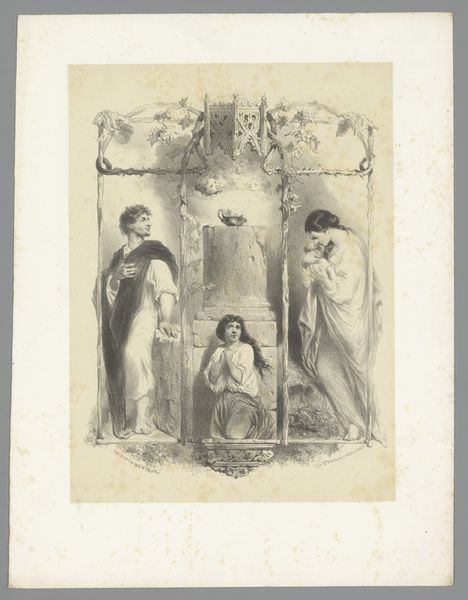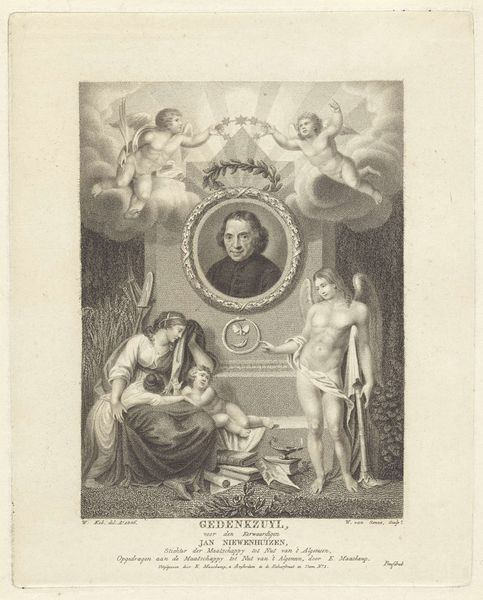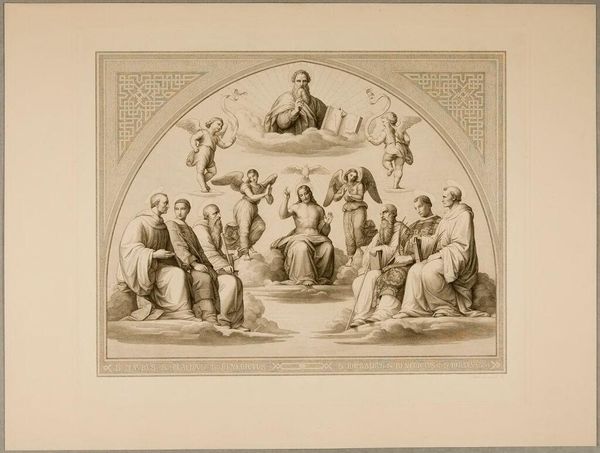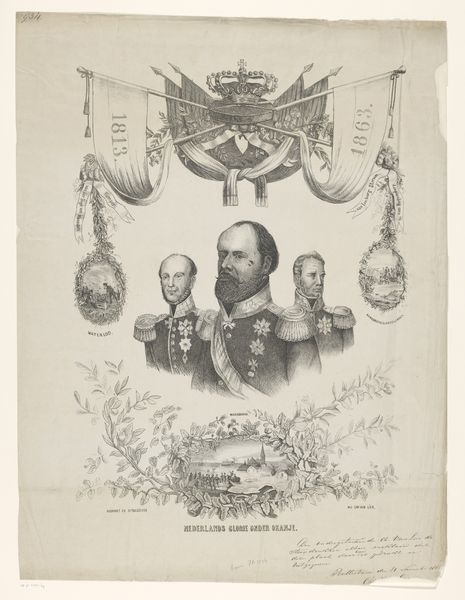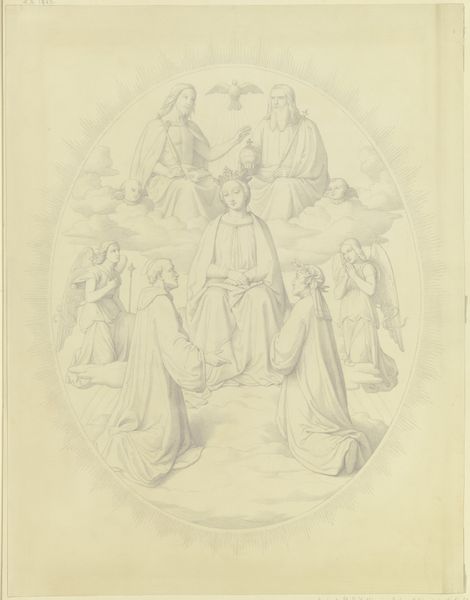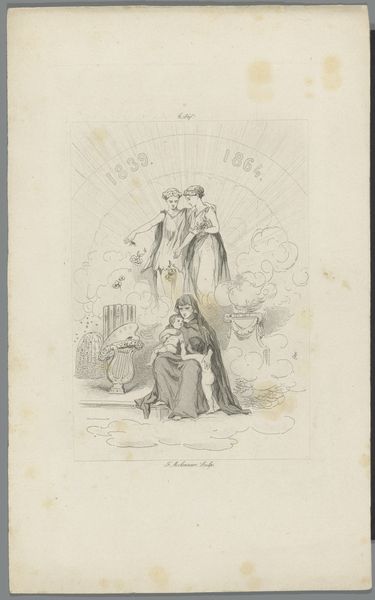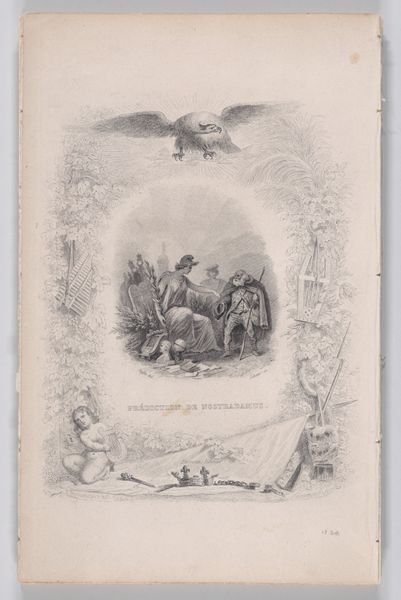
Allegorische voorstelling over de oprichting van de Louisa Stichting 1835 - 1898
0:00
0:00
gerardusjohannesbos
Rijksmuseum
drawing, print, paper
#
portrait
#
drawing
#
allegory
#
narrative-art
# print
#
paper
#
academic-art
Dimensions: height 548 mm, width 435 mm
Copyright: Rijks Museum: Open Domain
Curator: Here we have an allegorical representation, a print dating from between 1835 and 1898 by Gerardus Johannes Bos. It is titled "Allegorical Representation of the Establishment of the Louisa Foundation." Editor: The scene has an aura of restrained ambition. It seems meticulously arranged, yet somewhat faded in its idealistic expression. It feels like peering into a time capsule of aspirations, tinged with melancholy. Curator: Indeed. The piece layers the founder portraits, angels, buildings, and representations of virtue to establish cultural ideals through symbolic associations. Note the compositional mirroring from top to bottom, creating visual echoes across social tiers. How do these juxtapositions affect your interpretation? Editor: I observe a deliberate hierarchy with the founders elevated near divine symbols, and a street view in the midground flanked by allegorical scenes of charity and education. The power dynamic feels pronounced, reminding us of the context of philanthropy and social reform within an uneven society. Is it meant to inspire reverence? Curator: Partially. Allegories often reflect and reinforce prevailing value systems, aiming to educate by associating actions with their perceived consequences. The symbolism of the torch, crown, and accompanying figures offers moral instruction rooted in concepts like benevolence and good governance. These icons trigger pre-existing emotional and intellectual associations, don't you think? Editor: Precisely. By visually linking the foundation with symbols of royalty and divinity, the artist asserts the Louisa Foundation's legitimacy, subtly implying divine endorsement of its activities. The layout itself reflects the cultural values it attempts to solidify. It feels self-aggrandizing in retrospect. Curator: Such displays provided continuity in visual rhetoric for contemporary viewers. By adopting traditional visual motifs to validate new civic entities, they bridge the past with present ambitions, using visual shorthand to communicate legitimacy and purpose. Editor: It gives insight into how institutions in that era wanted to portray themselves, navigating visual signifiers to appeal to an audience with clear distinctions of power. It offers a poignant glimpse into the self-aware artifice underpinning so many institutions. Curator: A dense symbolic tapestry indeed! Editor: Quite insightful and indicative of its era, agreed.
Comments
No comments
Be the first to comment and join the conversation on the ultimate creative platform.
